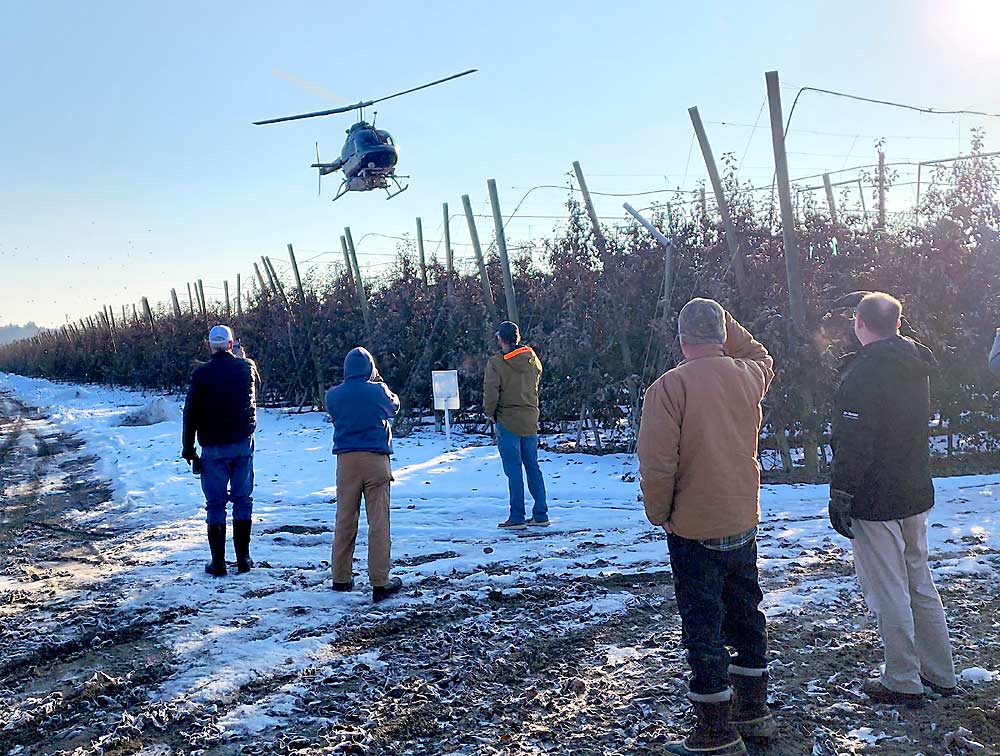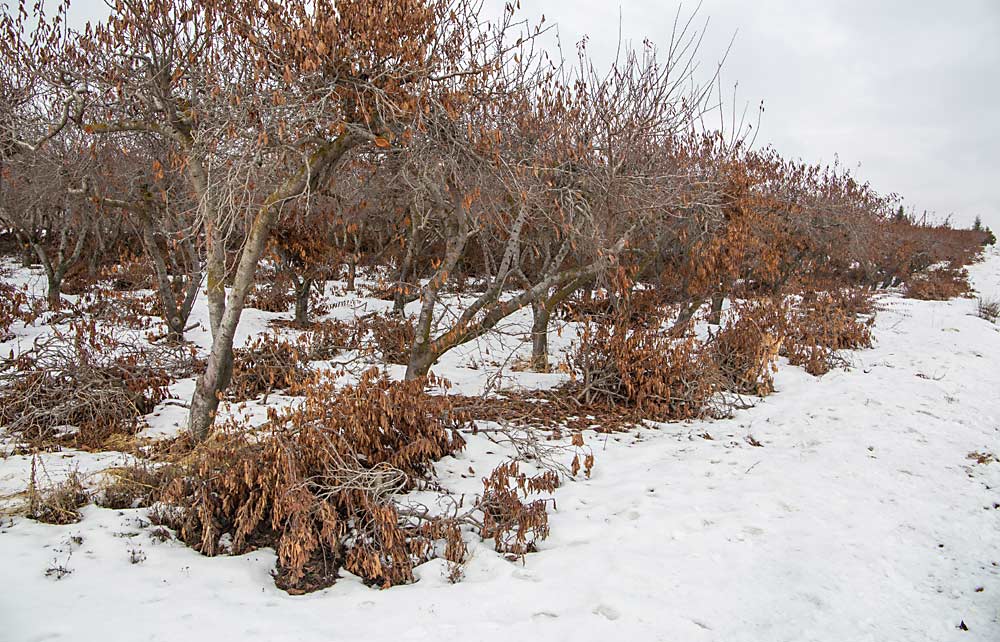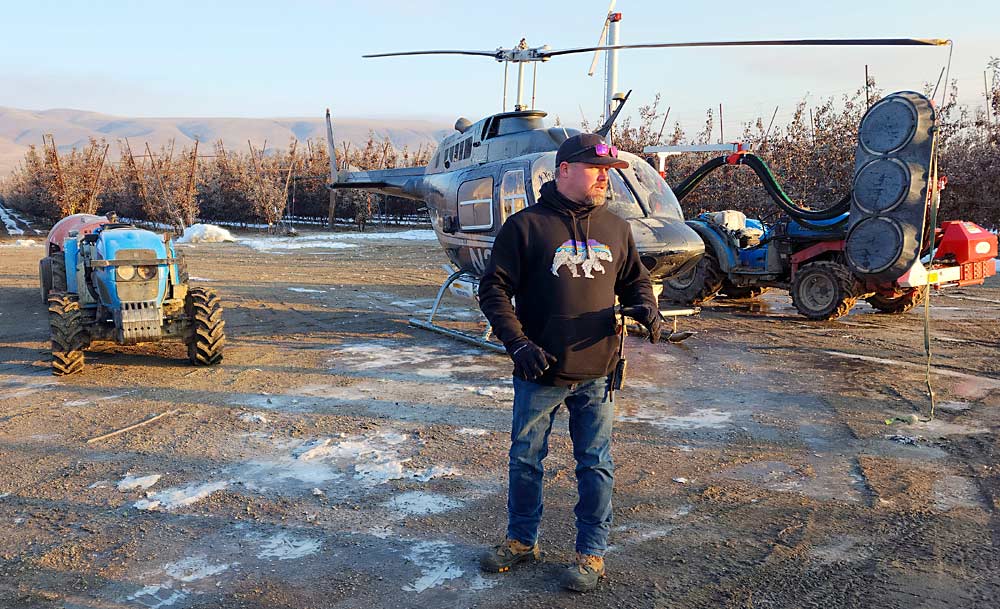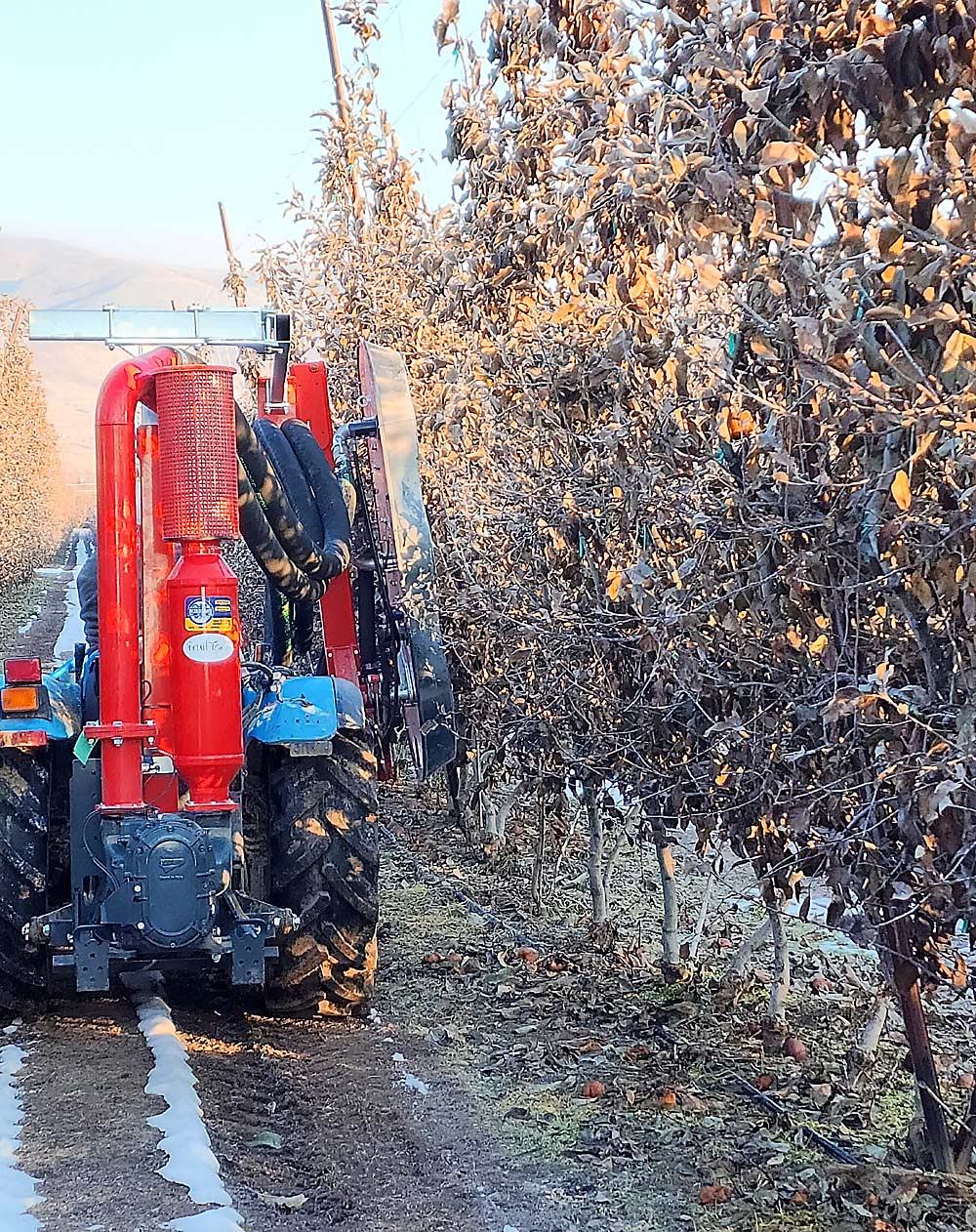
Washington fruit growers spent winter wondering why there were still so many leaves hampering pruning.
The short answer from Washington State University is that 2022’s warm fall in the Pacific Northwest, followed by a sudden freeze, interrupted trees’ normal senescence. But the oddity should have little, if any, impact on tree nutrition and fruit development.
Still, over the winter, growers’ head-scratching persisted almost as stubbornly as the leaves themselves. The question came up so often that Ines Hanrahan, director of the Washington Tree Fruit Research Commission, good-naturedly blindsided a researcher at the Apple Horticulture and Postharvest Research Review in late January in Wenatchee.
“OK, so the first question is: Why do we still have leaves on the trees?” Hanrahan asked WSU’s Lee Kalcsits after his completely unrelated report on retractable netting.
Kalcsits chuckled along with the small crowd but promised to publish a short article getting to the bottom of the case of the lingering leaves. His WSU colleagues, Matt Whiting and Bernardita Sallato, along with Tory Schmidt of the research commission, co-authored. They called it “Implications of delayed leaf abscission for spring nutrient management.”
For the record, Hanrahan’s query did not totally surprise him.
“I’ve been asked about this quite a bit during the winter,” Kalcsits said. “Ines and I have talked about this, as well, so the question from her wasn’t unexpected.”
The good news: Other than making winter pruning a bigger headache than normal, they don’t suspect the phenomenon will hurt much.

“The warm conditions in October may have reduced nutrient and carbohydrate remobilization, however large impacts to tree health are not expected,” the researchers said in the paper.
Here’s how the researchers explained it: During a normal fall, weather gradually cools as days shorten, cueing trees to slowly reroute carbohydrates and nitrogen out of leaves, eventually causing them to turn color and fall to the ground through the processes of senescence and abscission. The branches and leaders store those carbohydrates to fuel bloom, fruit growth and canopy development early in the spring, before the soil warms up enough for roots to start their work.
In 2022, the growing season got off to a late start, due to a cool spring, and then the unusually warm fall caused trees to continue growing well into October, the paper said. In mid-November, temperatures dropped suddenly, freezing the leaves on their branches before senescence had finished.
It wasn’t the first time, the researchers said. The 2014 season followed a similar pattern, with no ill effects.
Nurseries and growers sometimes intentionally mimic this nutrient disruption with premature fall leaf removal, which has minimal effect on reserves, yields or fruit quality the following year. Only when growers do so two years in a row without applying extra nitrogen fertilizer will that cause a problem, according to previous trials in cherry trees, the paper said.
Growers “annoyed”
That’s all good news, growers said, but they still cursed the extra hassle of pruning with all those leaves in the way.
“I wouldn’t say people are scared about it,” said Adrian Heffron, a fifth-generation grower near Sunnyside. “I would just say annoyed.”
Pruning instructions can be complicated to convey in a good year. The extra leaves made things that much harder because crews couldn’t always see what they were cutting.
In late January, a group of Yakima Valley growers were frustrated enough to run their own informal leaf removal trials, comparing results from an orchard sprayer emitting just air, a pneumatic leaf blower and a helicopter. Wapato’s Phil Doornink, the host, first tested the leaves’ grip by using a hand-held leaf blower on a few trees of each variety, something he recommends doing before dragging out any equipment.

All three methods of leaf removal worked to some degree, Doornink said.
The pneumatic blower had the best results across varieties but required two to four passes for each row and covered only one-fourth to one-half acre per hour. It also worked better in the morning, when temperatures were still below freezing, than in the low-50s afternoon hours.
The helicopter was the most efficient, covering 50 to 75 acres per hour, but it didn’t affect all varieties equally. The chopper removed all remaining leaves from Galas, 50 percent of WA 38 leaves and 30 percent of Honeycrisp leaves, but it had little if any effect on Scilate, Scifresh and Cripps Pink. The helicopter seemed more effective in the afternoon.
The sprayer had only marginal success in the afternoon, boosting Gala and Honeycrisp removal enough to allow pruners to see critical cuts, but not other varieties. It covered 4 acres per hour.

From all the tested blocks, however, leaves continued to drop even after three days, suggesting all the treatments at least loosened the clingy foliage. So, consider the trials a lesson if this all happens again, Doornink said.
“In conclusion, I believe if utilized correctly, these tools can help with leaf removal,” Doornink said. “Some varieties better than others. Even though results might not be noticeable right away, the agitation of leaves helps loosen their grip on the tree to allow them to fall sooner than those without.”
—by Ross Courtney
Tips if leaves won’t leave
To read “Implications of delayed leaf abscission for spring nutrient management,” by researchers Lee Kalcsits, Matthew Whiting, Bernardita Sallato and Tory Schmidt, visit the Washington State University Tree Fruit Extension website at: bit.ly/delayed-leaf-abscission.
The researchers recommend growers do the following:
—Maintain normal delayed-dormant spray with boron and zinc, which are generally low in Eastern Washington.
—For those concerned about tree vigor after a high crop load, ground-apply nitrogen during bloom to replace the trees’ reserves, which may run out earlier than the typical 40 days after full bloom.
—Monitor leaf nutrient levels in June, contrasting results with tree vigor. For more information about leaf tissue analysis, visit: bit.ly/leaf-tissue-analysis.
The researchers also pointed to earlier trials regarding premature defoliation of cherry trees that showed no long-term yield or fruit quality problems.
—R. Courtney






Leave A Comment